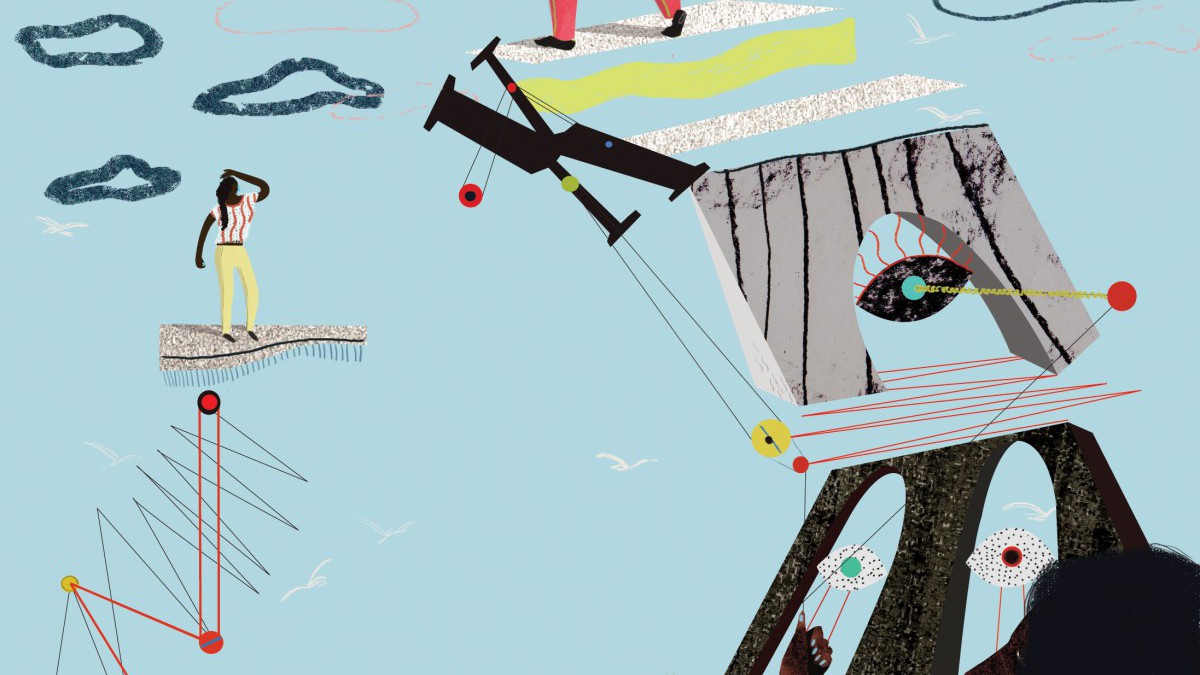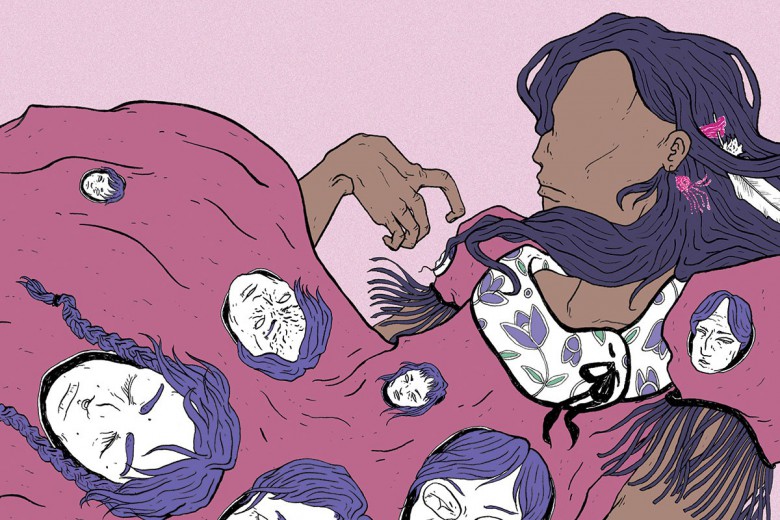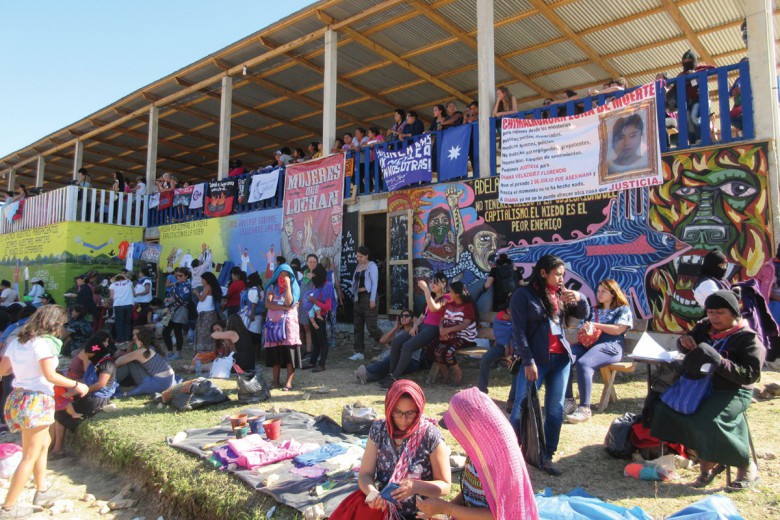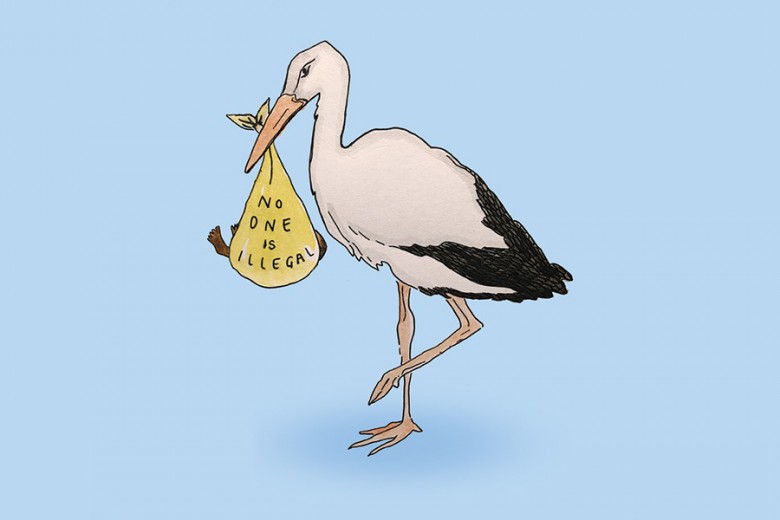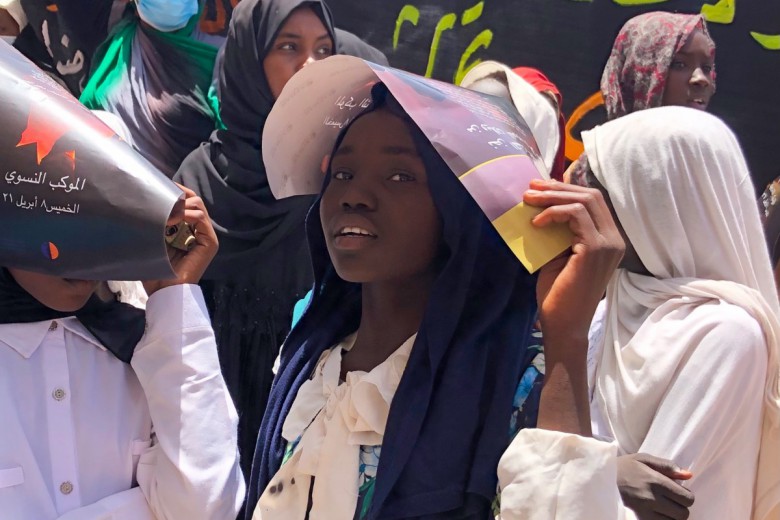In the hotel bar at the aging Winnipeg airport, about a dozen of us waited for delayed flights to carry us to destinations farther east. It was 2011 and we had just survived RebELLEs, a conference for young feminists.
The conference collapsed after a series of crises, the most explosive of which was the abject failure of the conference organizers and most delegates to confront white supremacy. This was underscored by a women of colour caucus filled mostly with white women wanting to learn about racism, and debates among white women about who is more colonized in Canada (Quebecers vs. Indigenous peoples). As a result, the second of what many hoped would be a triennial event ended with hundreds of women crying. It would not be attempted again.
It was Tria Donaldson’s first experience with the feminist movement. Going to RebELLEs was supposed to be an opportunity to explore feminism and feminist organizing. As an organizer in Victoria, she had mostly been involved in environmental justice and anti-racist movements. As a young woman of Punjabi and Mohawk descent, she was excited to go to the conference and be among women who looked like her. Despite being accustomed to entering spaces that she describes as “fairly white,” this conference surpassed even that expectation. “It was brutal,” she says.
Donaldson, now a union activist based in Regina, remains critical of how the conference was organized: “I think [RebELLEs] was indicative of where mainstream feminism is right now, but it is also where a lot of our movements are. There’s lip service paid to racism and there’s not a lot of intersectionality.”
The feminist critique
Syreeta Neal, a Black-mixed womanist, wouldn’t call herself a feminist: “It doesn’t feel like it’s a space that’s inclusive or intersectional enough right now for me to feel like I’m a part of it.”
The lack of intersectionality within the feminist movement remains the biggest challenge to its legitimacy. North America was built on white supremacy, the more realistic description of what many people call white privilege. Economic and social policies have advanced white people at the expense of non-white people since contact: from free land offers to European immigrants to the genocidal policies used to attack Indigenous peoples, our histories have built the Canada we experience today, and racism is woven into all of society’s structures.
Part of these structures includes the normalization of our hetero-patriarchal system, which marginalizes and dehumanizes queer and trans folks, and assumes that the heterosexual nuclear family, led by a man, is the most legitimate unit of Canadian society.
By default, this extends to women’s collective identity. Whiteness is normalized, generalized, and is assumed to be the face of the average woman. White feminists have, by and large, failed to confront the structures that maintain and promote white supremacy. As a result, they continue to organize in ways that reproduce these systems of oppression in the feminist movement itself.
Ruth Koleszar-Green, a professor of social work at York University, argues that the very foundations of Western feminism are part of the problem. As a social movement rooted in the European history of women’s liberation from being the property of white men, in its current orientation it can’t properly reflect the historical or ongoing experiences of colonization.
“Feminism wants to tell me what it means to be a woman, which becomes a colonial discourse, instead of looking at what I am, or who I am, as a Mohawk woman. And those identities cannot be separated,” says Koleszar-Green.
“For me, it’s still the fact that feminism ‘saves Indians,’” she says. And if it’s not trying to save them, feminism often pays lip service to Indigenous women but rarely asks for them to speak up: “We’re put on the stage … as Aboriginal women we’re asked to smudge, say our prayer, and then asked to leave the stage … or when the Elder takes the stage and speaks and people get frustrated about how long the Elder takes … feminism does it over and over and over again.”
“It’s rare to have movements led by people of colour unless it’s a marginalized movement, like [the one for] murdered and missing Indigenous women,” says Donaldson. She argues that even in situations where it should be obvious for feminist organizations to take on certain campaigns, they often simply aren’t there. She points to the crisis of forced sterilization of Indigenous people in Saskatoon as one example, where the reproductive justice movement has failed to meaningfully organize against this ongoing practice.
“The conquering of the Earth, land, people, and all that lives on the planet in the name of wealth, progress, industrialization, and capitalism has always been intertwined. Part of the rage that Indigenous and racialized women have with white women is that white women often only wanted the same benefits from the system as white men, but have not wanted to radically change the system the way that Indigenous and racialized women would have wanted,” says Tina Lopes, a facilitator who works with organizations to bring about systemic change.
Lopes contends that the challenge to resist white-centric feminism, “has existed from the time that white women started gathering to fight for rights. Racialized and Indigenous women would have always known in our bodies that what was happening to us as women was an extension of what would then be used to justify the way that our people were being treated and the land was being exploited.”
“Silencing is violencing”
White supremacy is maintained in progressive spaces by rendering diverse voices invisible. Koleszar-Green is often frustrated by how she sees Indigenous women treated in feminist spaces – similar to how men treat women under patriarchy. “I’m told over and over and over again that I’m just a colonial body: I’m disposable and if I’m visible, I should become ‘good chattel,’ seen and not heard, speak when spoken to and so on. That perpetuation of how structures have been built causes a constant picking at how colonization has attempted to erase and eradicate.”
“Women in Canada who are racialized, who are Indigenous, don’t want to work with myopic white women who have not learned from years and years of history and examples that tell us: ‘here’s how to do it wrong,’’’ says Sandy Hudson, a co-founder of Black Lives Matter-Toronto. She notes that while it’s critical to centre the most marginalized groups in progressive campaigns, there’s also a very important strategic reason to do this.
“We miss huge opportunities for movement building … and what are we helping to perpetuate? In not organizing in these strategic ways, we are perpetuating different kinds of ways that sexism impacts different types of work,” says Hudson. She asks why feminists refer to the $0.73 wage gap rather than fighting to close the much larger gap between white men and racialized women. Not only do those women need relief the most – as they only make 55.6 per cent of white men’s wages, on average – but the campaign would be more compelling if women were to identify just how much further ahead white men really are.
Dismantling white supremacy in feminism
The truth on which feminism is built – that radical social change can only be achieved through solidarity – remains central, even if mainstream feminism has failed to embody this. For Donaldson, success will be connected to how feminists confront the forces that seek to uphold gender inequality: “The systems that oppress us work best when we’re divided. Movements haven’t been very good [at finding] ways to meaningfully bring folks from other perspectives within their movement. How much stronger would we be if we were actually able to elevate marginalized voices in a meaningful way?”
“White women should be expected to confront white supremacy. Women of colour can scream about this … but until the people who have a seat at the table start flipping tables and making a commotion, there’s only so much we can do from outside of the house,” says Neal.
To do this, activists need to form meaningful relationships with each other: “The most important thing is to work with community. If you don’t have that human connection to somebody, it’s really hard for people to care on an emotional level,” says Neal.
Lopes asserts that part of what is needed to confront white supremacy in feminism is “to actually change the way in which our organizations, institutions and society confers opportunities and the various beneficial aspects of society. There have been gains made by white women that have not been afforded to Indigenous and racialized women.”
Movements led by women, like Idle No More, demonstrate the critical importance of centring non-white voices in social movements – social change is impossible unless we confront the layered experiences of oppression within Canadian society.
Black Lives Matter likewise has intentionally placed the most marginalized voices at the centre of their organizing efforts: “Transfeminism is at the core … [which] came to be thanks to the queer Black women who are rooted in a transfeminist politic. We want to ensure that our politics work for the people most affected by white supremacy and anti-Black racism, in the most urgent way,” says Hudson.
“If we don’t work from there, we’ll always leave people out. Our history shows us that. We study our history and try to learn from where we feel like movements in the past could have been stronger. It’s been extremely powerful to be that type of organization and to be engaging academics and non-academics, teachers and parents, and trans folks, gender non-conforming folks, and everyone that makes up the Black community.”
“We’re defining ourselves and defining resistance the way it should be defined” – an important piece of wisdom for feminists everywhere.


